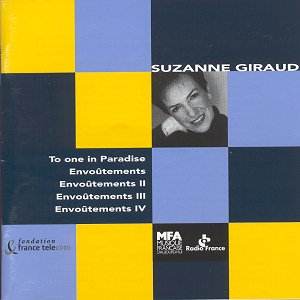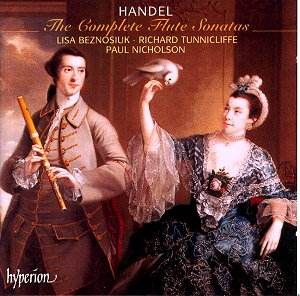 Composer: Suzanne Giraud
Composer: Suzanne Giraud
Works: To One in Paradise (1999), Envoûtements I (1996), Envoûtements II (1997), Envoûtements III (1997), Envoûtements IV (1997)
Performers: Sylvie Sullé (mezzo-soprano), Irvine Arditti (violin), Clara Novakova (flute), Jean Geoffroy (marimba), Ensemble Accroche-Note (Françoise Kubler, soprano, Arnaud Angster, clarinets, Emmanuel Séjourné, percussion), Arditti Quartet
Recording: Radio France, salle Olivier Messiaen, September 1999; Studio 18, February 2000; Studio 106, February 2000; Studio 103, May 2000; Studio 103, September 2000
Label: MFA 216037
Suzanne Giraud, born in 1958, is a composer whose oeuvre has been shaped by a rich tapestry of influences, ranging from the spectral techniques of Tristan Murail to the introspective minimalism of Morton Feldman. This recording provides an extensive survey of her works, particularly highlighting her capacity for lyrical expression and her intricate handling of instrumental color. The collection includes her orchestral scena, “To One in Paradise,” alongside the “Envoûtements” series, which showcases her evolving compositional voice. Each piece reflects a personal narrative, steeped in both literary and emotional subtext, inviting listeners into Giraud’s unique world.
The performances presented here are exemplary, with a deep commitment to the nuanced demands of Giraud’s scores. The “Envoûtements” series particularly stands out for its technical complexity and imaginative structure. For instance, “Envoûtements II,” written for alto flute and marimba, employs a blend of timbral exploration and rhythmic complexity that evokes a sense of witchcraft, as the composer herself notes. Clara Novakova’s flute playing is commendably ethereal, weaving seamlessly with Jean Geoffroy’s marimba to create a resonant dialogue that captures the otherworldly essence Giraud seeks to portray. The ensemble’s precision, particularly in the intricate interplays of “Envoûtements IV” for string quartet, highlights the Arditti Quartet’s prowess in navigating the challenging score with both technical accuracy and emotive depth.
The recording quality is outstanding, capturing the clarity of each instrumental voice while ensuring that the sonic textures of Giraud’s orchestration are vividly realized. The acoustics of salle Olivier Messiaen contribute to a warm yet detailed sound palette, allowing the delicate nuances of “To One in Paradise” to emerge without being overshadowed by the orchestral backdrop. Sylvie Sullé’s mezzo-soprano voice is particularly noteworthy in this work, where her delivery of Edgar Allan Poe’s text is imbued with a haunting expressiveness. The interplay between her voice and the orchestra is carefully balanced, allowing the lyrical lines to flow organically within the orchestral framework.
Giraud’s music, while firmly situated within contemporary classical paradigms, also resonates with a broader historical context. The influence of her mentors, especially the spectralists and the avant-garde composers she encountered in her studies, is evident in her innovative use of space and texture. Yet, Giraud’s voice remains distinctively her own, characterized by an inherent lyricism that sets her apart from her contemporaries. This recording serves not only as an introduction to her work but also as an affirmation of her place within the contemporary music landscape.
The comprehensive nature of this release, coupled with the dedication of its performers, makes it an essential listen for anyone interested in the evolution of modern composition. Giraud’s ability to weave personal experience with musical expression is compelling, and the emotional depth of her works, particularly in “To One in Paradise,” resonates powerfully. This recording stands as a testament to her artistic vision, inviting both seasoned listeners and newcomers to engage with her music’s subtle complexities and profound beauty.



